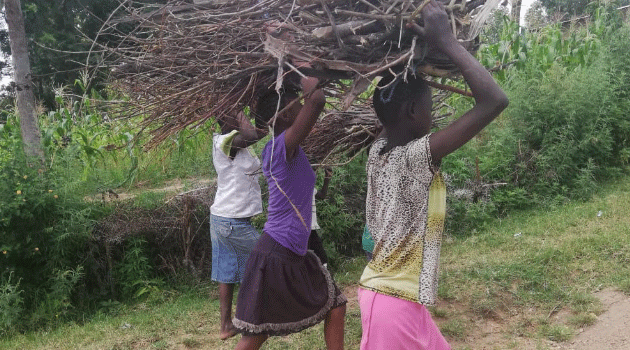
A new survey shows that 1 in every 5 adolescent’s girls has either had a live birth, or is pregnant with her first child. Photo/CFM.
NAIROBI, Kenya, Dec 18 -Young girls in Kenya experience a higher risk of mistimed and unwanted pregnancy compared to older women, according to a new study by the Health Ministry.
The Kenya Demographic and Health Survey (KDHS) 2014-2018 report on teenage pregnancy prevalence shows that Narok topped the list with 40pc followed by Homa Bay County at 33pc.
It is followed by West Pokot at 29pc, Tana-River and Nyamira 28pc and Samburu with 26pc at the sixth position.
Overall, the report established that teen pregnancy and motherhood rates in Kenya stand at 18pc.
About 1 in every 5 adolescent’s girls has either had a live birth, or is pregnant with her first child.
Rates increase rapidly with age, from 3pc among girls at 15 years-old, to 40pc among girls aged 19 years. The situation varies across counties, with some counties seeing higher rates than others.
However, contraceptive use among youth remains low with the known barriers to uptake including fear of the side effects, access to commodities, funding and partner approval.
Fifteen-year-old Grace Nafula from Sirisia Sub County in Bungoma is 6-months pregnant and successfully managed to sit for her KCPE examination.
Nafula narrates how she was sexually molested by her father after her parents separated when she was young, prompting her to seek refuge with her maternal grandparents, leaving behind her two brothers.
“My parents would not get along and so my mother left us with our father. It was at this time that my father would sexually assault me,” the shy Nafula narrated.
Nafula’s grandparents are peasants and so there is no much money to go round. She was becoming of age and had increasing needs. This exposed her to exploits from men in the township.
She cites a boy from the nearby college who would give her money of amounts between Sh50 – Sh200, although not guaranteed at each sexual encounter.
The money, she said, would help her buy stationaries and other personal effects.
Asked whether she initiated the use of family planning methods, Nafula stated, “No, I do not know anything about family planning methods. I have nobody to guide me because my grandmother is always out in the fields to meet our basic needs.”
Of much concern is the fact that cultural and traditional beliefs play a major role in educating girls on matters family planning with majority terming it a taboo.
Nafula’s case is currently before the chief who has since summoned the man responsible for the pregnancy for unspecified action.
Faith Naliaka, another teenager, who does not stay far from Nafula, is 8 months pregnant and too managed to sit for her KCPE exams.
Unlike Nafula whose grandparents’ are traditional and not well informed about family planning, her parents are teachers with her father chairing the guiding and counseling department in her school.
Naliaka’s mother Josephine who was shocked upon learning of her daughter’s pregnancy explained, ““It all started when I noted that she would take long hours to get home after sending her to the river. I followed up, only to find out that she was involved with my neighbour’s son who is a Form One student. I approached the boys’ mother and agreed to keep an eye on both of them.”
“Being a teacher I know the importance of educating my girls on sexual reproduction health, and so when they reached puberty, I told them if they are not careful around boys they will get pregnant,” she said.
But despite the efforts of the parents, Naliaka fell pregnant.
“This was such a huge blow to the family as she is my first born daughter, and also I got to learn of the pregnancy when she was 6 months which made me wonder whether the baby will be okay,” she said.
On the use of family planning, Josephine said she was against it as it would only encourage immorality, further exposing the girls to Sexually Transmitted Diseases (STD’s).
Violet Masinde, the nurse in charge of Maternal and Child Health (MCH) at the Sirisia Sub- county Hospital is also worried of the high cases of teenage pregnancy, adding that the uptake of family planning methods among the adolescents was low due to cultural barriers and knowledge.
“Most of the teenagers find it hard to approach the facility for family planning services and so every weekend we have an outreach, going to the community,” she said, explaining that “We visit different homesteads and talk to both parents and their girls on the need to embrace family planning as well as demystify the myth surrounding the topic.”
The end result of the outreach is that few girls are now visiting the health facility to seek family planning methods.
“To ensure their comfort we have a special room as well as nurse who attends to their needs when they visit the facility,” she said.
The preferred mode of family planning among the adolescents in this area is the long-term method of between three to five years so as not to interrupt with their education.
Poverty is also a contributing factor of teen pregnancies. With most families struggling to make ends meet, exploitative men who can meet the girls’ needs demand for sex in exchange.
According to (PMA) 2020 Kenya survey, poverty increases the risk of teenage pregnancy. Girls from poor households had a 26 per cent chance of beginning childbearing earlier compared to their counter parts from richer households who are at 10 per cent risk.
While the total mistimed (26%) and unwanted (17%) pregnancies among all women (15–49 years) remains high, young women (15–24 years) experience even higher mistimed (32% vs. 30%) and unwanted (15% vs. 10%) pregnancies compared to women in other age groups.
Every year, about 13,000 Kenyan girls drop out of school due to accidental pregnancy and 103 out of every 1000 births in Kenya are delivered to girls aged 15–19.
Accidental pregnancy is a leading cause of abortion. However, contraceptive use remains low among youth; 73% of currently sexually active single women aged 15–19 report not using any contraception method.
Principal Investigator attached to the PMA 2020, Peter Gichangi said there is a ray of hope and that women are using contraceptives at early ages.
However, while women in rural areas have an early sex debut, they delay use of contraceptives.
“Despite this progress, many health facilities, particularly private facilities in Kenya, do not offer long-acting modern methods,” Prof Gichangi told the Capital News Beat.
This year Kenya recorded high cases of teenage pregnancies among students sitting for their Kenya Certificate of Primary Education Examination (KCPE) and Kenya Certificate of Secondary Examination (KCSE).
A high number of KCPE candidates were this year forced to write their exams in hospitals after going into labor during exams.
This prompted the Education Cabinet secretary Amina Mohammed to order investigations into the high cases of teenage pregnancies witnesses across the country during the examination n period.
The directed the Quality Assurance and Standard department to carry out investigations into the cases and table a report for immediate action by the ministry.














































